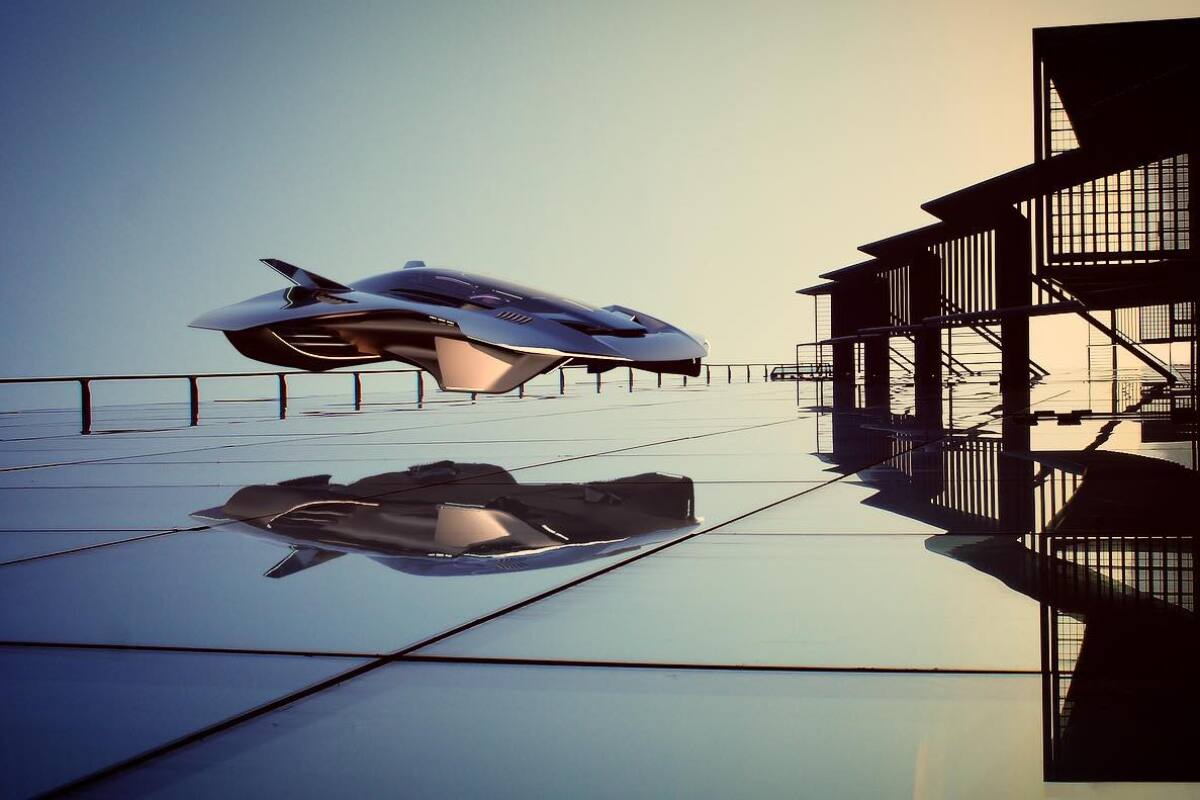By Loz Blain
December 30, 2021

The Bellwether Volar: a flying hypercar for private owners
Bellwether Industries
The UK's Bellwether Industries has built and flown a half-scale prototype of its stunning Volar eVTOL, and is preparing to release footage. It's the most brazenly futuristic design we've ever seen, a flying hypercar for a utopia even sci-fi doesn't dare dream up.
I mean, look at the thing. It looks like it's doing 200 miles an hour sitting still. The lines are graceful, even sensual. The profile razor-sharp. The slanted louvers give it a rib cage and warn of frightening velocities. The stubby vee of the tailfins evokes the threat of a fighter jet, but the layered bodywork and its sumptuous, gleaming finish tell us this is a design of peace, hope and ambition.
This is a design to stir the imagination and the passions. You can picture it knifing into a cloud bank, leaving gently swirling vortices of vapor as the only calling card of its silent visit. You can see it gently touching down on an impossibly high-rise vertipad, its sleek glass roof retracting to let a lady and a gentleman out, dressed for the opera and right on time.

A stunningly-designed flying supercar for a sophisticated and genteel utopian future
Bellwether Industries
It's not only the most beautiful eVTOL concept we've ever seen, it might be the most beautiful we're likely to see for a long time. So take one last magical gaze through the image gallery before we look any closer, eh?
VIEW 13 IMAGES
The Volar, from what we can tell, is effectively a big multicopter. Its electric propulsion system, in the form of ducted fans, is hidden from view by all that sumptuous bodywork. A couple of these images appear to suggest that there are only four propulsion units, which appear to be fixed and incapable of gimbaling thrust. There does not appear to be any kind of cruise propulsion, nor redundancy unless those ducts each contain more than one fan mounted coaxially.
The renders look like a tandem two-seat vehicle, and indeed this is the mocked-up configuration for the prototype that's just been flown. Bellwether seems keen to sell this as a privately owned aircraft for inner-city travel, but told eVTOL.com's Jen Nevans that the final design will have four to five seats, an addition that will make it some 3.2 m (10.5 ft) wide, considerably bigger than a car, and probably similarly empty most of the time.

The half-scale Volar Antelope prototype was shown off at this year's Dubai Air Show
Bellwether Industries
The team also said it's aiming for top speeds around 220 km/h (135 mph) and an endurance of 60-90 minutes. So, double the speed and several times the range that real-world multicopter designs like the VoloCity, Jetson One and eHang 218 are getting with just one or two seats. This implies either the existence of magical batteries running unicorn-tear electrolytes, or some kind of hybrid fuel system. It also implies that the bodywork won't restrict the airflow to the fans or impact efficiency, which seems optimistic.
Apparently, the final vehicle is also shooting for a maximum takeoff weight of 600 kg (1,320 lb), including an hour's worth of battery and everyone on board. So you and your passengers had best start dieting now to be ready to fly in 2028, when Bellwether says it wants to get this thing to market for around the price of a private jet. According to Air Charter Service, the cheapest private jet on the market today is the cheerful little Cirrus Vision Jet, which will hollow out your piggy bank to the tune of US$2 million.
 |
| BLADERUNNER ANYONE |
We love a beautiful design as much as anyone, but the Bellwether Volar is so long on style and so short on substance that we've gotta call it like we see it: a designer's wet dream and an engineer's sticky problem. When flight footage of the half-size prototype, flying untethered, drops in January, we may learn more and change our tune, but if it turns out to be a big quadcopter with a pretty shell on it, it'll be hard to get too excited.
Check out a video below.
Source: Bellwether Industries
Source: Bellwether Industries
No comments:
Post a Comment